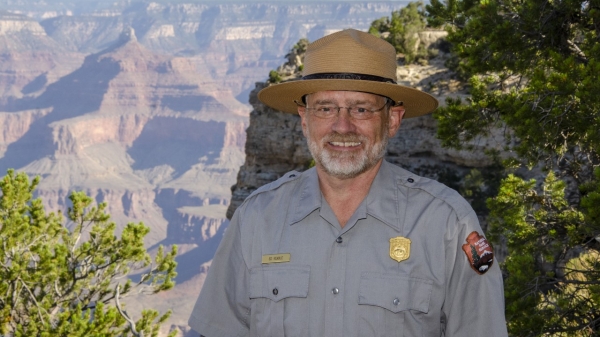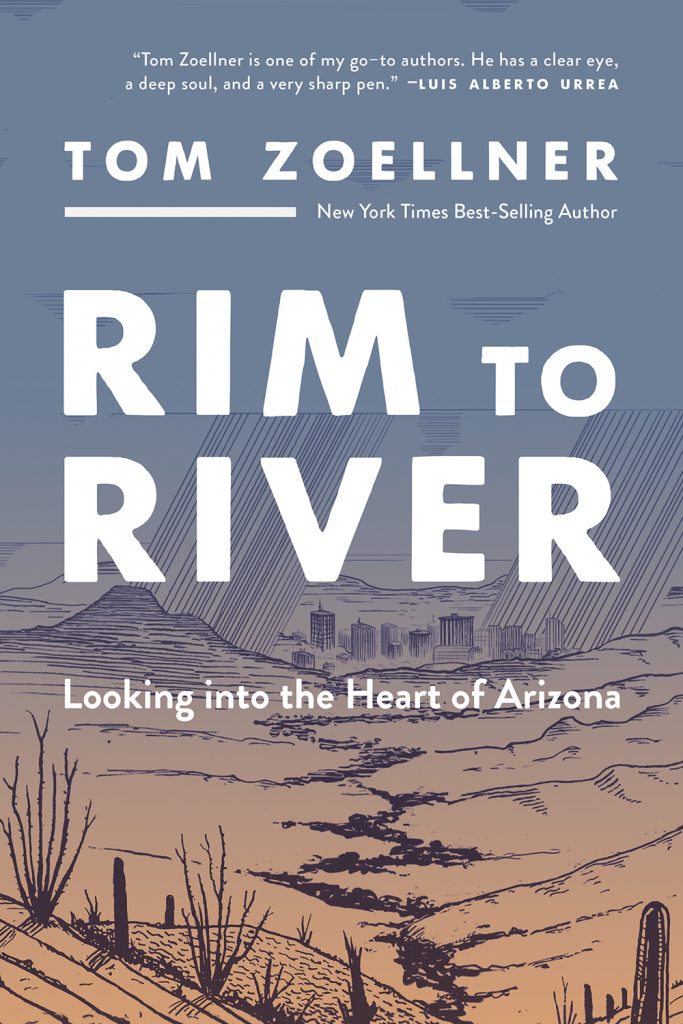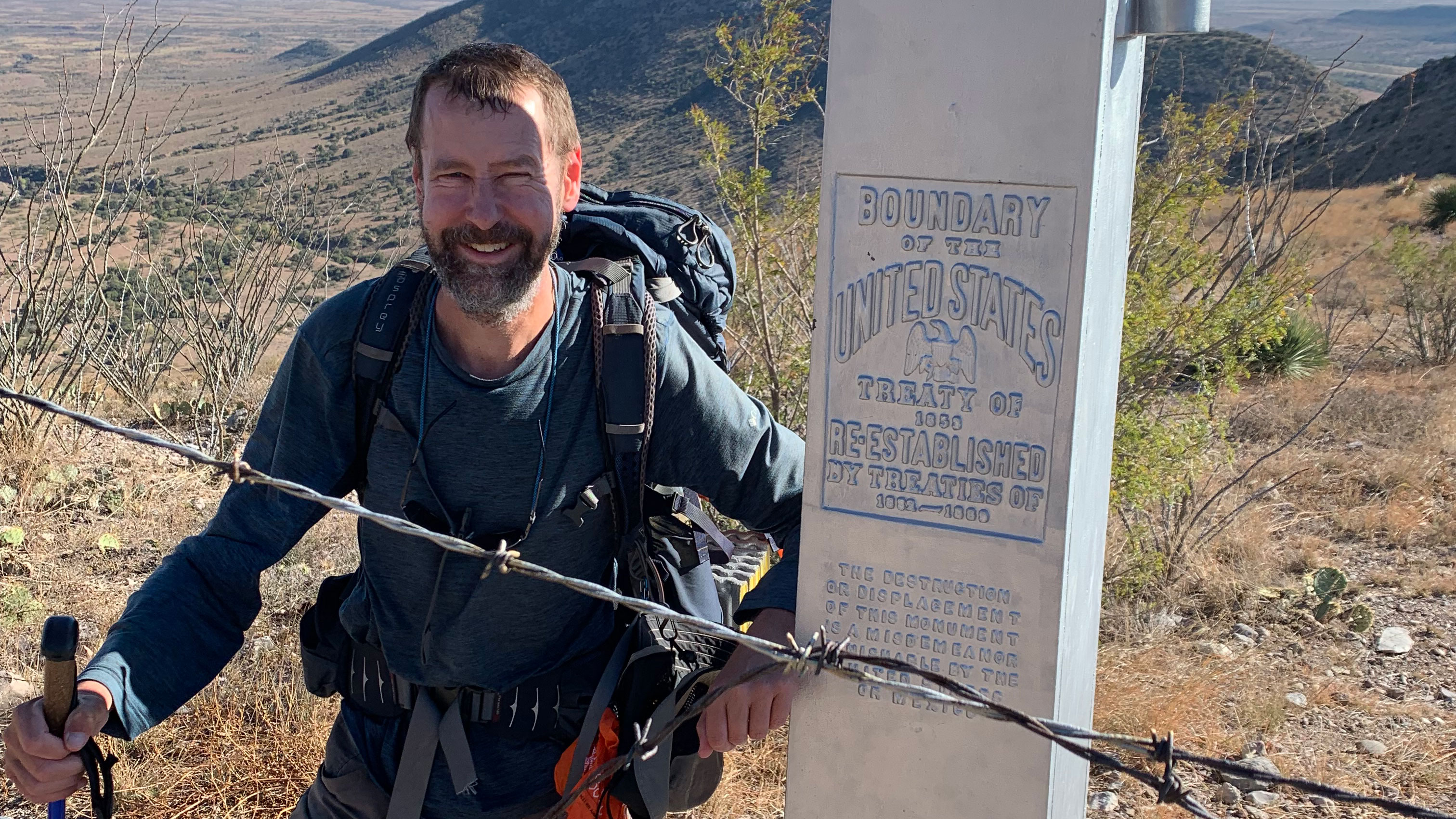History PhD candidate turns 46-day walk into a love letter to Arizona

Tom Zoellner was born in Colorado but he’s an Arizonan through and through.
His great-great-grandfather was a cotton farmer on Homestead Act land near Papago Buttes. Zoellner went to elementary school and high school in Arizona, and later worked as a reporter for the Arizona Republic from 2001 to 2003.
He knows the state and has had, in his words, “a long and complicated relationship” with Arizona.
That relationship is celebrated in the award-winning author's latest book, "Rim To River: Looking into the Heart of Arizona."
The book, which was released on Feb. 28, explores “the wine-colored pinnacles and complex spirituality of Navajoland; the mind-numbing stucco suburbs of Phoenix; desperate border crossings; legislative skullduggery; extreme politics; billion-dollar copper ventures; dehydrating rivers; retirement kingdoms; old-time foodways; ghosts of old Indian wars; honky-tonk dreamers; murder mysteries; and magical Grand Canyon reveries.”
Zoellner, who is currently an online PhD candidate in Arizona State University’s School of Historical, Philosophical and Religious Studies, said the impetus for the book came from a 46-day walk he took in fall 2019 from Utah to Mexico.
Zoellner will be talking about his book at the Arizona Heritage Center in Tempe on March 16. Tickets can be purchased here.
ASU News talked to Zoellner, who is also a professor of English at Chapman University, about the walk, the book and his love-hate relationship with Arizona.
Question: Why is your relationship with Arizona complicated?
Answer: I mean, it’s a beautiful place. You don’t need me to tell you that. But it also has, I think, a really complex sociology; a lot of aspects that are maddening. You get unique ways of how people relate to one another coming out of what was called the Phoenix Model of Development, which is a combination of shopping centers, detached single family ranch homes, far-flung arterial streets and airport connections over rail connections.
Q: So this book might be about, let’s call it, the beauty and befuddlement of Arizona?
A: That’s a good way to phrase it. It’s 17 essays. And the narrative scaffolding for it was a walk across the entire state, which I took mainly down the Arizona Trail from Utah to Mexico. To describe the book’s architecture, it’s sort of like, “Here we are, walking down the trail and I see this, and I see that.” And then, it transitions into an essay.
Q: Are there things you discovered about Arizona that perhaps you didn’t know before taking the walk?
A: Two things I can summarize easily. The first is I thought I knew Arizona, and I realized I really didn’t know it at all. It’s something else to stand in the (Mazatal mountains) and look north and you can see Humphries Peak, and then you look south and you can see Flatiron and the Superstitions. You can sort of see how the state’s complicated geology kind of clicks together. That was a mindblower to me.
The other sort of epiphany — which maybe isn’t much of an epiphany, but I really felt it in my bones — is the degree to which the state’s aridity really defines the place. I developed a really profound appreciation for water. There were a couple of points where I almost ran out, and while it was not exactly call-search-and-rescue time, it was still concerning enough that if the next spring on my map is dry, I’m going to be in trouble.
Tom Zoellner poses next to a border marker during his 46-day walk across Arizona. Photo courtesy Tom Zoellner
Q: One of your essays in the book is about Arizona’s honky-tonk dreamers. Who are they?
A: Some of the material in the book is slightly repurposed and revised from two cover stories I did for Phoenix New Times. One was on 10 iconic restaurants of Arizona and 17 iconic bars of Arizona. These places that have been around forever, like the Spirit Room in Jerome, the Sultana Bar in Williams, the La Gitana in Arivaca; all these kind of really ancient bars with a sense of permanence in a state that’s otherwise characterized by impermanence.
Q: Did you come out of the book with any different viewpoint of Arizona as a whole?
A: Yes, I liked it a lot more. Arizona has complexities that I think are easy to miss. I mean, that’s one of the biggest cliches about the desert ever. That it rewards the subtle viewer and you have to spend time with it and not immediately dismiss it. I found that true of Arizona’s culture as well.
Q: Give me an example.
A: There’s an essay in there called the "Love Song of Interstate 10 from Phoenix to Tucson," which is about the most reviled stretch of freeway. It’s ugly, right? It’s terrible. But yet, there’s an essay in there that is sort of a weird celebration of it, finding something to enjoy in all the ugliness.
Q: Who do you think will appreciate this book? People who have lived in Arizona for a long time, or people who want to learn about Arizona?
A: That’s a great question, and I thought about it a lot. If I had to come down one way or another, I would say it’s a love letter to Arizona, to those who thought they knew it and even those people who thought they don’t really care for Arizona. Stop and look harder, if that makes sense.
Top photo: Tom Zoellner poses on the North Kaibab Trail of the Grand Canyon during his 46-day walk from Utah to Mexico. Photo courtesy Tom Zoellner
More Arts, humanities and education

Grand Canyon National Park superintendent visits ASU, shares about efforts to welcome Indigenous voices back into the park
There are 11 tribes who have historic connections to the land and resources in the Grand Canyon National Park. Sadly, when the park was created, many were forced from those lands, sometimes at…
ASU film professor part of 'Cyberpunk' exhibit at Academy Museum in LA
Arizona State University filmmaker Alex Rivera sees cyberpunk as a perfect vehicle to represent the Latino experience.Cyberpunk is a subgenre of science fiction that explores the intersection of…

Honoring innovative practices, impact in the field of American Indian studies
American Indian Studies at Arizona State University will host a panel event to celebrate the release of “From the Skin,” a collection over three years in the making centering stories, theories and…

